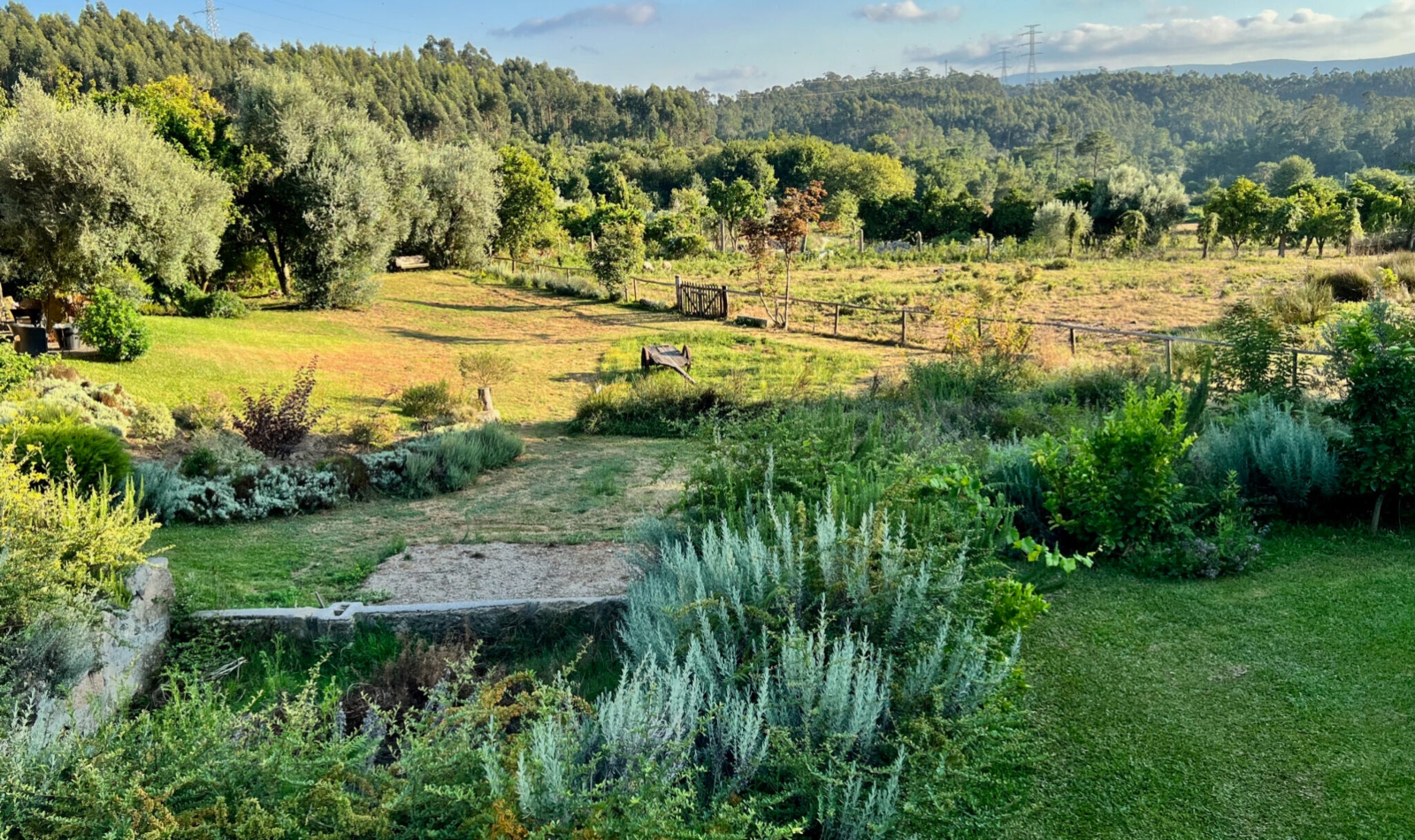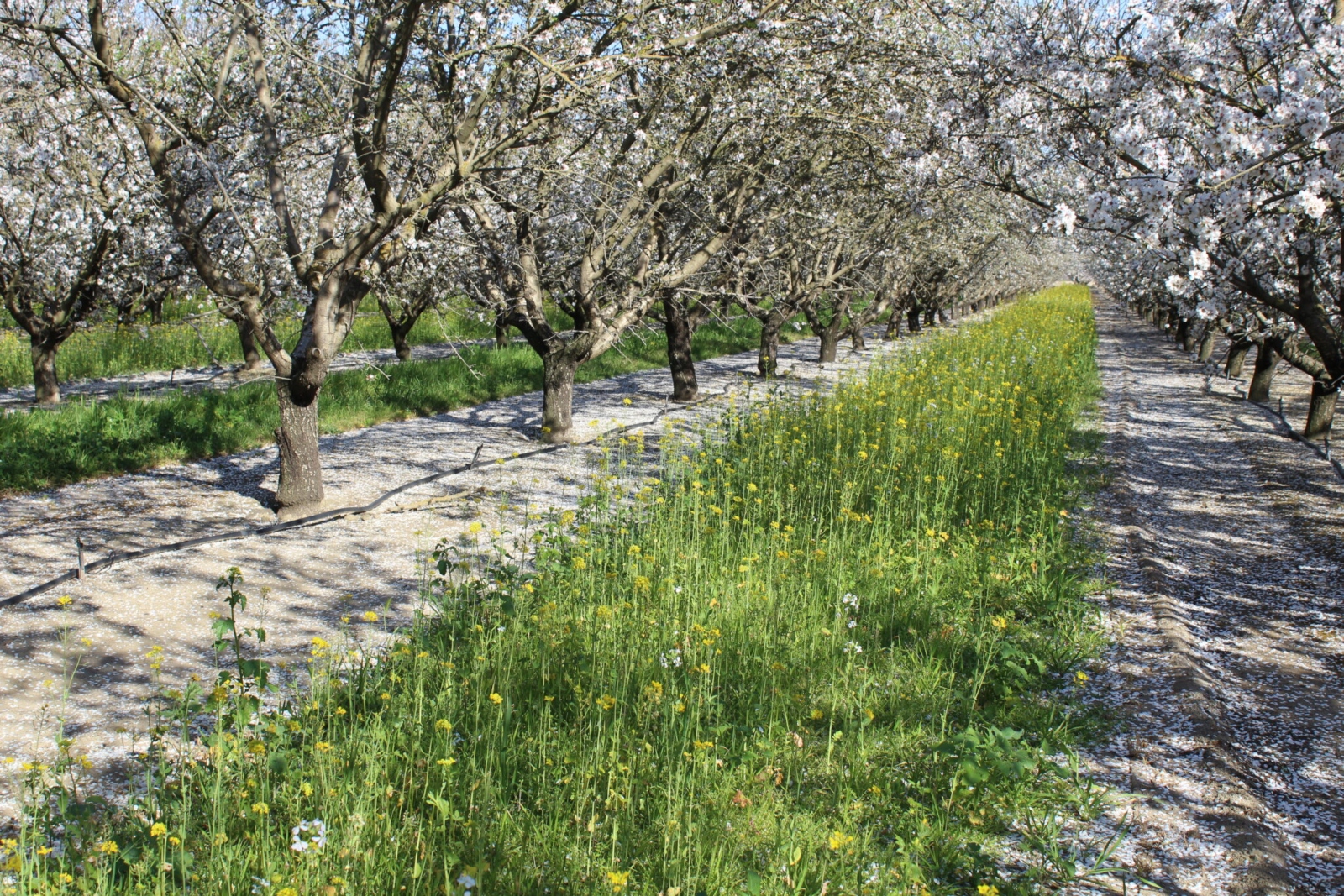This story was originally published by the Food and Environment Reporting Network.
In 2002, Deirdre Birmingham and her husband, John Biondi, bought a 166-acre farm in southwestern Wisconsin’s Driftless region. On a portion of that land — once used to raise cattle and grow feed crops like corn, soybeans, and alfalfa — they planted apple and pear trees to make fermented ciders. On a larger, spring-fed portion, abutting the orchard and en route to meadow and oak forest, they seeded in Indian and June and bluestem grasses, echinacea and bergamot, spiderwort and blazing stars, restoring a portion of the region’s native prairie. They knew this would benefit beleaguered wild bees but they weren’t fully aware how this decision to rewild their landscape would help the farm, too.
Two decades later, on June 14, 2022, the weather turned unseasonably hot. After tedious cold and wet weeks, temperatures swelled throughout the morning until they hit the high 90 degrees F. “We had this record-breaking heat and the trees just fast-forwarded into blossom, and dandelions and so many other things also went into bloom,” Birmingham said. “I could see wild bees on our pears and I thought, they just have tons of work to do, and a lot of choices” of flowers to visit. She worried they’d skip her orchard’s 16,000 trees, which like many food plants rely on pollinators to produce a crop. Honeybees, which are trucked in to perform this task on orchards around the nation, were nowhere to be found — her beekeeper neighbor’s shipment was late. To her surprise, though, local wild pollinators like bumble, sweat, and mason bees, nesting in the restored prairie, did all the pollination work. The result: a bountiful apple crop. “The wild will do it for you,” Birmingham said.
There’s plenty of research that supports Birmingham’s experience of wild bees’ relevance in pollinating crops like tree fruits, blueberries, and cranberries, and the role diverse plantings play in giving bees a needed forage and habitat boost. That’s why USDA and conservation nonprofits like the Xerces Society encourage farmers to plant buffers like pollinator strips — wide swaths of flowering plants adjacent to crop fields. (Birmingham got help from both.) But there may be more going on between Birmingham’s plants and bees in this era of climate change. Her property, with its multifaceted landscape of forest and crop trees, hedgerows and prairie, has the hallmarks of a refugium.
Refugia, from the Latin for shelter and first used in biology in the 1940s, are viewed as “relatively buffered” from climate change and a haven for vulnerable species. A refugium might be found in a sheltered valley along a river, with plenty of cover from trees. As extreme heat and drought wither plants, obliterate pollen, dry up water sources and make it harder for bees to function or find food — not to mention, threaten the human food supply — a refugium’s cooler, damper microclimate could help all manner of species survive.
In fact, refugia have played a critical role in protecting species before. During the last Ice Age, the woodland ringlet butterfly, the common European viper, brown bear, black hellebore and mountain ash, hunkered down in warmer microclimates to survive the cycle of extreme cold. When things warmed up, they re-emerged and repopulated parts of the planet.
Researchers are now looking at ways this might work in our age of rising temperatures, and the role that farms might play in enhancing biodiversity. The UN Environment Program found that food and agriculture currently drive 70 percent of species loss, through deforestation, grassland conversion, chemical use, and other changes to the landscape. But farms like Birmingham’s might help counter that trend at a time when climate change is accelerating the threat to species.
For example, in a “complex landscape structure” like Birmingham’s, tree canopy provides cooling shade; densely planted trees and woody shrubs (i.e., hedgerows) block wind to prevent the land from drying out; soil covered with low-lying cover crops retains moisture; and flora move moisture into the air to lower the surrounding temperature. All of this help bees, birds, and the plants themselves.
At Dru Rivers’ Full Belly organic farm in California’s northern Capay Valley — about a 90-minute drive from the Bay Area — she and her partners planted hedgerows over 30 years ago, including some that yield crops, like pomegranates and olives. The farm’s 400 acres also produce about 100 varieties of fruits, vegetables, and nuts, through which they rotate cover crops. All of those choices enhanced the soil. So when torrential rains from the state’s unprecedented atmospheric river hit this past January, the porous soil managed to absorb all the water rather than flooding the farm. And, said Rivers, “We have the firm belief that our healthy soil helped in the drought” that hammered California over the last three years. “We still have really vibrant orchards.”
As Full Belly’s plant life has survived extremes, so too has extensive wildlife. Studies found that Full Belly provides so much welcoming habitat that it virtually “grow[s] their own [wild] bees,” making honeybee pollination unnecessary. Full Belly also supports a vast amount of birdlife, including wood ducks, Western bluebirds, and red shouldered hawks. Although researchers haven’t recorded temperatures in the farm’s microclimate, it bears the hallmarks of a refugium and “the greenness of it is comforting, even for people habitat,” Rivers says.
Data show that the best climate-mitigating effect comes from a mosaic of landscape types, with more greenery producing greater benefits. These “dampen the impact of extreme weather events, be it high temperature, extreme drought, extreme precipitation,” wrote Jonas Lembrechts, an ecologist at the University of Antwerp, in an email. “Such ‘green solutions’ can certainly be highlighted as one of the better climate adaption scenarios a person can do.”

These habitats are plentiful in nature too. Scientists around the world have been locating existing refugia and tallying their various soil types, water availability and slope direction, all of which play a role in creating nurturing microclimates. One meadow refugium in a Sierra Nevada, California, valley was found to be 18 degrees F cooler than surrounding mountainsides; researchers identified 400 plant and 100 bird species on just 800 acres. “Especially at night, the cooling effect of nature reserves can reach to 2 kilometers (nearly one mile),” Lembrechts wrote, expanding a refugium’s reach.
These protective reserves are critical for the future of species. Refugia in general “harbor large amounts of genetic diversity, so I guess that gives some hope,” said biologist Matthew Koski at Clemson University, because the species that survive in these microclimates can potentially evolve. “So conserving these regions is extremely important.” One challenge: “What if these refugia are kept to very small, protected areas and then developed around? That’s going to be totally problematic because it’s likely that those population sizes will decline,” he said, unless some connectivity between microhabitats can be established. Work is already underway in the U.S. to address those problems, with solutions like pollinator corridors in rural and urban areas.
A recent study pointed out that even a farm that supports a monoculture like wheat is often scattered with less-productive tracts suitable for habitat. Ilona Naujokaitis-Lewis, a landscape ecologist with Environment and Climate Change Canada at Canada’s National Wildlife Research Centre, has been studying 30 agricultural landscapes in Ontario. She sees particular promise in hedgerows, under which she’s found summer temperatures to be “remarkably” cooler than on adjacent crop fields, sometimes by nearly 15 degrees F. (Lembrechts found a similar scenario in Flemish gardens.) The more trees, the more cooling effects from direct shading and wind movement patterns. Treed hedgerows in particular “can maximize biodiversity of beneficial insects and provide co-benefits for climate mitigation,” concluded research co-conducted by Naujokaitis-Lewis.
That doesn’t mean refugia are immune to the stresses of extreme weather. “Microclimates that are a few degrees cooler might be enough to weather a short period of extreme heat or drought, but eventually pollinators need to leave their relative safety to forage for food,” said Grant Duffy, an ecologist at the University of Otago in New Zealand. And plants will eventually succumb to persistent scorch and lack of water, even if your “soil sponge,” as Lembrechts calls it, helps out for a while.
Nevertheless, a range of plants that bloom across the span of a bee’s life might allow it to stay put in a protected oasis longer. “Anything that adds more habitat complexity is going to create more microclimate variability [to give] pollinators … a better range of options when temperatures are especially warm (or cold), so they can avoid the worst of those extremes,” Duffy said.
In other words, refugia could buy species some time. First to adapt, then to wend their way toward more comfortable areas. “All animals can survive within certain critical thermal limits — the lower and higher temperatures at which they die — which they achieve by something we call plasticity, or acclimation,” said Hester Weaving, an entomologist at the University of Bristol. Insects can adapt to heat by producing heat-shock proteins, for example. “You can imagine that this process could be really useful for climate change, because, different from evolution, which is occurring over many generations and might be too slow, acclimation can happen within hours.” How plastic are insects, including bees? Not very, a recent study of Weaving’s revealed. “That’s when you know these microclimates are going to be really important for [their] survival,” she said.
Agricultural landscapes with a robust array of plants will likely become even more important as temperatures warm. “When we create pollinator-friendly habitat, we create larger populations of pollinators that are going to have a better capacity to adapt to future changes,” said biologist Jessica Forrest of the University of Ottawa, who studies how climate change affects plant-pollinator interactions. The bigger those populations are, “the more chance there is that one individual’s got a mutation that allows it to tolerate whatever new environmental condition is coming along.”
Sadly, those benefits aren’t recognized often enough. Naujokaitis-Lewis, for example, has encountered farmers bent on removing hedgerows from their property to keep them from toppling onto fields in intensifying storms, fully unaware of the climatic advantages of keeping them intact. Birmingham, meanwhile, has experienced these advantages firsthand. Two years ago, her landscape proved its greater worth. “We had a drought year that didn’t faze our prairie because these plants are so deep-rooted,” she said. Not only did her fruit trees get pollinated; her wild bees survived and thrived in their habitat.



